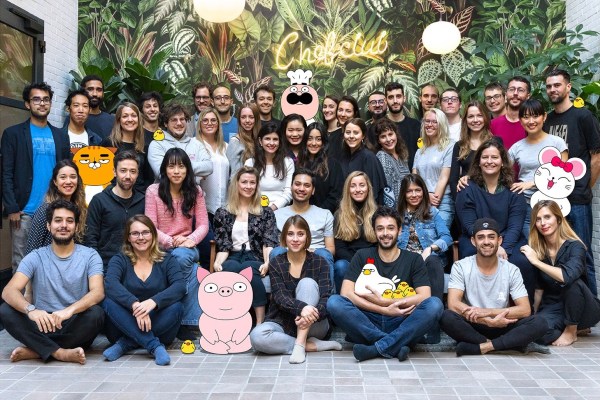Chefclub hasn’t attracted a lot of headlines over the years as it has only raised $3.5 million. But it is slowly building a major media brand on social media platforms as it now competes directly with Tastemade and Tasty.
Compared to more traditional recipe websites and brands, Chefclub focuses exclusively on the intersection of food and entertainment. If you’ve watched a few Chefclub videos, your reaction is probably something along the lines of “oh no they didn’t.”
You’ll see a lot of melted cheese, and somehow cooking often involves deep frying all the things. Some people around me are obsessed with those videos even though they’d never consider watching a cooking show on TV.
“We are normal people, we don’t have the same cooking skillset that you can see on TV and in books. We opened up the kitchen cabinet and used everyday ingredients. That positioning has always been there and hasn’t changed,” Chefclub co-founder Thomas Lang told me.
And it’s been working incredibly well. The company now has 75 million followers across multiple social media platforms. It generates a billion video views per month and reaches 200 million people. The startup has never spent a cent in paid media to grow this user base.
Due to its lean culture, there are “only” 50 people working for Chefclub. The entire team is based in Paris, with one third of them who are not French. Despite this very French DNA, Chefclub has noticed that you don’t necessarily have to adapt all your content to different geographies. 70% of videos work well across the globe.
Chefclub optimizes its content for Facebook first and foremost. As many publishers told me, it has become increasingly harder to work around Facebook’s algorithm to reach a large audience on Facebook. But the startup has been through all the ups and downs of Facebook’s algorithm. Those relentless efforts have been key to the company’s growth as many media brands simply gave up on Facebook.
Other social networks seem way easier when you compare them to Facebook. Chefclub is now also active on YouTube, Snapchat (Discover partnership in France and Germany), Instagram and TikTok. The startup says that it is the leader in Europe and Latin America. In the U.S., the company is still in the growth phase — it is close to reaching 1 billion views in the U.S. in 2019.
So how do you turn a successful media strategy into a business? Chefclub is betting heavily on the Direct-to-Consumer wave. The company first started with a recipe book. You can scan QR codes in the book to play the video on your phone. It has sold half a million cookbooks directly on its website.
More recently, Chefclub has introduced Kiddoz, a cooking kit for kids. There’s a book with 20 recipes, easily identifiable measuring cups and an app.
Up next, Chefclub wants to partner with retailers to license its brand and sell branded products. You could imagine buying Chefclub-branded appliances and toys in the near future.
“We have another revenue source that we call ‘the cherry on the cake,’” Thomas Lang said. Chefclub generates revenue from preroll ads on YouTube and other social platforms with revenue-sharing deals. While this is not a focus, Chefclub gets $200,000 in ad revenue per month with no additional effort.
Finally, Chefclub wants to open up content creation to community members. In order to scale its content, Chefclub wants to become a platform that broadcasts user-generated content to other community members.
